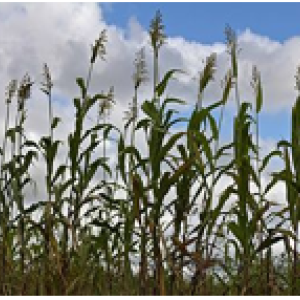
This study looks at the double challenge of increasing food security while addressing environmental problems caused by agriculture. It identifies a set of key actions in three broad areas that hold the greatest potential for achieving these efficiency and sustainability goals.
The study focuses on 17 key crops that produce 86 percent of the world's crop calories and account for most irrigation and fertilizer consumption on a global scale. It looks not just at the impacts of what is grown, but where their production generates the greatest impacts – i.e. it identifies the greatest ‘leverage points’ where action could yield the strongest benefits.
It finds that the biggest opportunities cluster in six countries -- China, India, U.S., Brazil, Indonesia and Pakistan - along with Europe.
The three major areas of opportunity and key leverage points for improving the efficiency and sustainability of global food production are:
1. Produce more food on existing land. Previous research has detected the presence of a dramatic agricultural "yield gap" -- difference between potential and actual crop yield -- in many parts of the world. This study finds that closing even 50 percent of the gap in regions with the widest gaps could provide enough calories to feed 850 million people. Nearly half of the potential gains are in Africa, with most of the rest represented by Asia and Eastern Europe.
2. Grow crops more efficiently. The study identified areas where there is greatest opportunity to improve the efficiency with which nutrients and water are used and agricultural GHGs reduced. The area with the greatest opportunities for reducing GHGs is Brazil and Indonesia for deforestation; China and India for rice production; and China, India and the United States for crop fertilization.
3. Use crops more efficiently. Here the issue is looked at from the consumption perspective. One major opportunity for enhancing food security is by closing the ‘diet gap;’ rather than feeding grains to livestock, the paper suggests that these crops could be eaten directly, thereby potentially feeding a far greater number of people. Additional, measures to reduce food waste could increase food availability. The U.S., China and Western Europe account for the bulk of this "diet gap," with corn the main crop being diverted to animal feed.
Abstract
Achieving sustainable global food security is one of humanity’s contemporary challenges. Here we present an analysis identifying key “global leverage points” that offer the best opportunities to improve both global food security and environmental sustainability. We find that a relatively small set of places and actions could provide enough new calories to meet the basic needs for more than 3 billion people, address many environmental impacts with global consequences, and focus food waste reduction on the commodities with the greatest impact on food security. These leverage points in the global food system can help guide how nongovernmental organizations, foundations, governments, citizens’ groups, and businesses prioritize actions.
Citation
West, P. C., Gerber, J. S., Engstrom, P. M., Mueller, N. D., Brauman, K. A., Carlson, K. M., Cassidy, E. S., Johnston, M., MacDonald, G. K., Ray, D. K. , Siebert, S., Leverage points for improving global food security and the environment. Science, 2014; 345 (6194): 325 DOI: 10.1126/science.1246067
Read the full study here.
For more coverage see here or here.
You can read more about global food security on our website here, sustainable intensification here and sustainable agriculture here. For more information on grain-fed livestock see here and especially the briefing paper produced by the FCRN on “Livestock, feed and food security”. For more on addressing waste see our research library section on waste and resource use here.







Post a new comment »